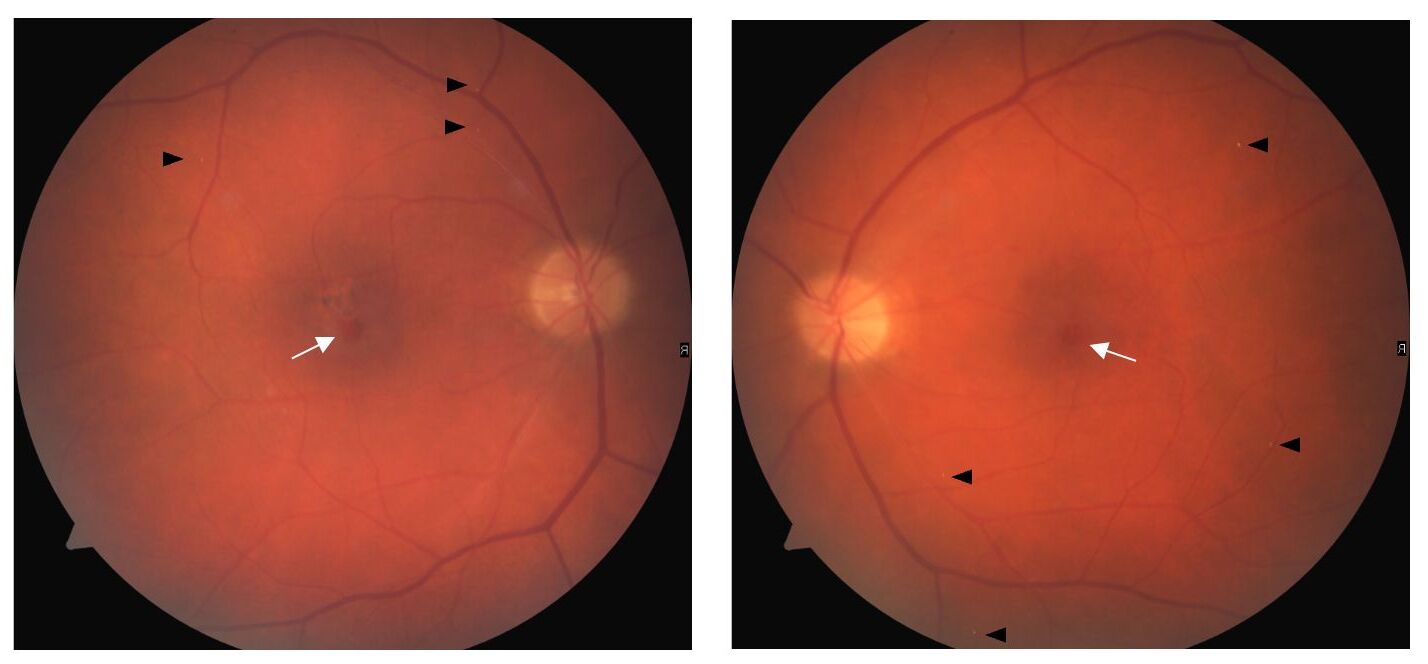
Retinal Telangiectasia Hypogammaglobulinemia might sound like a mouthful, but understanding it can be simpler than you think. This rare eye condition affects the small blood vessels in the retina, leading to vision problems. Hypogammaglobulinemia refers to a lower level of antibodies in the blood, making it harder for the body to fight infections. Together, these conditions can pose unique challenges. But what exactly causes them? How do they impact daily life? And what treatments are available? In this post, we'll dive into 25 fascinating facts about this condition, shedding light on its symptoms, causes, and management. Whether you're a curious reader or someone seeking answers, you'll find valuable information here.
Key Takeaways:
- Retinal Telangiectasia Hypogammaglobulinemia is a rare eye condition caused by genetic mutations, leading to vision loss and abnormal blood vessels in the retina.
- Treatments like laser therapy and anti-VEGF injections can help manage symptoms, while gene therapy and stem cell research offer hope for future treatments.
Understanding Retinal Telangiectasia Hypogammaglobulinemia
Retinal Telangiectasia Hypogammaglobulinemia is a rare eye condition that affects the blood vessels in the retina. It can lead to vision problems and other complications. Here are some fascinating facts about this condition.
-
Rare Condition: This disease is extremely rare, affecting only a small number of people worldwide.
-
Blood Vessel Abnormalities: It involves abnormal blood vessels in the retina, which can leak fluid and cause swelling.
-
Vision Loss: Over time, the condition can lead to progressive vision loss if not managed properly.
-
Genetic Factors: Genetic mutations are often responsible for this condition, though the exact genes involved are still being studied.
Symptoms and Diagnosis
Recognizing the symptoms early can help in managing the condition better. Here are some key points about its symptoms and diagnosis.
-
Blurred Vision: One of the first symptoms is often blurred or distorted vision.
-
Floaters: Patients may see floaters, which are small shapes that appear to float in the field of vision.
-
Difficulty Reading: Reading can become challenging due to the distortion of central vision.
-
Eye Exams: Regular eye exams are crucial for diagnosing this condition early.
-
Fluorescein Angiography: This imaging test helps doctors see the blood vessels in the retina and identify any abnormalities.
Treatment Options
While there is no cure, several treatments can help manage the symptoms and slow the progression of the disease.
-
Laser Therapy: Laser treatment can seal leaking blood vessels and reduce swelling.
-
Anti-VEGF Injections: These injections help reduce the growth of abnormal blood vessels in the retina.
-
Steroid Injections: Steroids can help reduce inflammation and swelling in the retina.
-
Vitrectomy: In severe cases, a surgical procedure called vitrectomy may be necessary to remove the vitreous gel and relieve pressure on the retina.
Living with the Condition
Managing daily life with Retinal Telangiectasia Hypogammaglobulinemia can be challenging, but there are ways to cope.
-
Low Vision Aids: Devices like magnifiers and special glasses can help improve vision.
-
Support Groups: Joining a support group can provide emotional support and practical advice.
-
Regular Monitoring: Frequent check-ups with an eye specialist are essential to monitor the condition and adjust treatments as needed.
-
Healthy Lifestyle: Maintaining a healthy lifestyle, including a balanced diet and regular exercise, can help overall eye health.
Research and Future Directions
Ongoing research is crucial for understanding and finding better treatments for this condition.
-
Gene Therapy: Scientists are exploring gene therapy as a potential treatment to correct the genetic mutations causing the disease.
-
Stem Cell Research: Stem cell therapy is another area of research that holds promise for regenerating damaged retinal cells.
-
Clinical Trials: Participating in clinical trials can provide access to new treatments and contribute to scientific knowledge.
-
Funding and Awareness: Increased funding and awareness are needed to support research and improve patient outcomes.
Interesting Facts
Here are some additional intriguing facts about Retinal Telangiectasia Hypogammaglobulinemia.
-
First Described: The condition was first described in medical literature in the early 20th century.
-
Different Types: There are different types of retinal telangiectasia, each with its own characteristics and progression.
-
Impact on Daily Life: The condition can significantly impact daily activities, making tasks like driving and reading difficult.
-
Supportive Technologies: Advances in technology, such as screen readers and voice-activated devices, can help patients maintain independence.
Final Thoughts on Retinal Telangiectasia Hypogammaglobulinemia
Retinal Telangiectasia Hypogammaglobulinemia, a rare and complex condition, affects the eyes and immune system. Understanding its symptoms, causes, and treatments can help manage the disease better. Early diagnosis is crucial for effective treatment, which may include medications, lifestyle changes, and regular check-ups.
Patients and caregivers should stay informed and seek support from medical professionals and support groups. Awareness and education about this condition can lead to better outcomes and improved quality of life.
Remember, each patient's experience is unique, so personalized care plans are essential. Stay proactive, ask questions, and advocate for your health.
By staying informed and connected, you can navigate the challenges of Retinal Telangiectasia Hypogammaglobulinemia more effectively.
Frequently Asked Questions
Was this page helpful?
Our commitment to delivering trustworthy and engaging content is at the heart of what we do. Each fact on our site is contributed by real users like you, bringing a wealth of diverse insights and information. To ensure the highest standards of accuracy and reliability, our dedicated editors meticulously review each submission. This process guarantees that the facts we share are not only fascinating but also credible. Trust in our commitment to quality and authenticity as you explore and learn with us.
